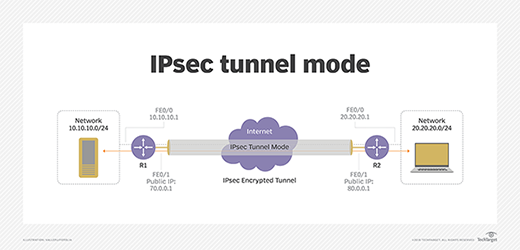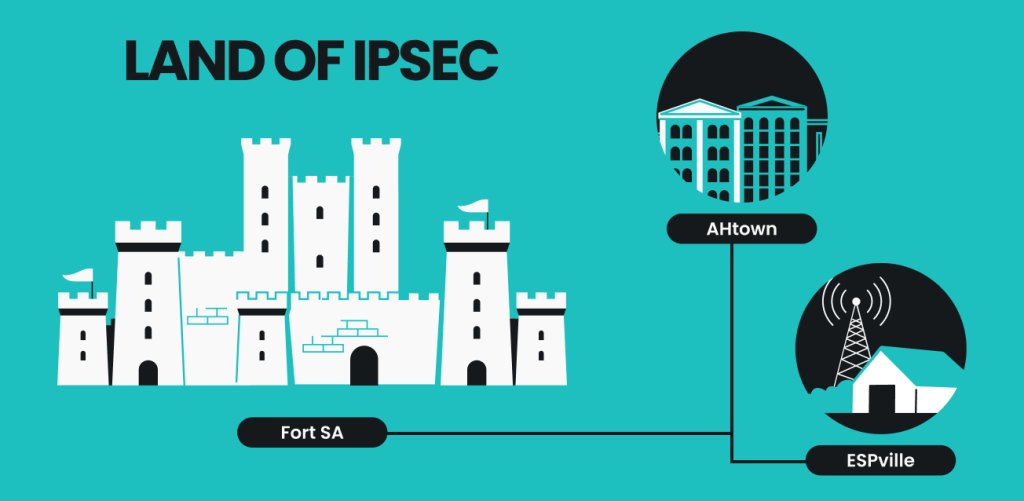Featured
Table of Contents
- – - Overview Of Ipsec -
- – What Is Ipsec Vpn And How Does It Work? The Co...
- – What Is Ipsec?
- – What Is The Ikev2/ipsec Vpn Protocol? How Doe...
- – Ipsec Basics
- – What Is Ipsec Encryption And How Does It Wor...
- – Ipsec Basics
- – Internet Protocol Security (Ipsec)
- – Ipsec Configuration - Win32 Apps
- – Site To Site Ipsec Vpn Phase-1 And Phase-2 T...
- Overview Of Ipsec -
IPsec (Internet Protocol Security) is a framework that assists us to protect IP traffic on the network layer. IPsec can secure our traffic with the following features:: by encrypting our data, nobody other than the sender and receiver will be able to read our data.

By computing a hash worth, the sender and receiver will be able to check if changes have been made to the packet.: the sender and receiver will verify each other to ensure that we are actually talking with the gadget we mean to.: even if a package is encrypted and verified, an assaulter could try to record these packages and send them again.
What Is Ipsec Vpn And How Does It Work? The Complete ...
As a framework, IPsec uses a variety of protocols to implement the functions I described above. Here's an overview: Do not fret about all packages you see in the image above, we will cover each of those. To give you an example, for file encryption we can select if we wish to use DES, 3DES or AES.
In this lesson I will begin with an overview and after that we will take a closer look at each of the components. Prior to we can secure any IP packages, we require two IPsec peers that develop the IPsec tunnel. To develop an IPsec tunnel, we utilize a procedure called.
What Is Ipsec?
In this phase, an session is developed. This is also called the or tunnel. The collection of specifications that the two devices will use is called a. Here's an example of 2 routers that have established the IKE phase 1 tunnel: The IKE stage 1 tunnel is only utilized for.
Here's an image of our two routers that completed IKE phase 2: As soon as IKE stage 2 is completed, we have an IKE phase 2 tunnel (or IPsec tunnel) that we can use to safeguard our user information. This user information will be sent out through the IKE stage 2 tunnel: IKE constructs the tunnels for us but it doesn't authenticate or encrypt user information.
What Is The Ikev2/ipsec Vpn Protocol? How Does It Work?


I will describe these two modes in detail later in this lesson. The whole procedure of IPsec consists of 5 actions:: something needs to trigger the production of our tunnels. When you configure IPsec on a router, you use an access-list to inform the router what information to secure.
Everything I describe listed below uses to IKEv1. The main purpose of IKE stage 1 is to establish a protected tunnel that we can use for IKE phase 2. We can break down phase 1 in 3 easy actions: The peer that has traffic that needs to be safeguarded will start the IKE stage 1 negotiation.
Ipsec Basics
: each peer has to show who he is. 2 commonly utilized options are a pre-shared key or digital certificates.: the DH group figures out the strength of the secret that is used in the crucial exchange process. The greater group numbers are more secure however take longer to compute.
The last step is that the 2 peers will verify each other using the authentication approach that they agreed upon on in the negotiation. When the authentication succeeds, we have actually finished IKE phase 1. Completion outcome is a IKE stage 1 tunnel (aka ISAKMP tunnel) which is bidirectional.
What Is Ipsec Encryption And How Does It Work? - Compritech
Above you can see that the initiator utilizes IP address 192. IKE utilizes for this. In the output above you can see an initiator, this is a distinct value that determines this security association.
The domain of interpretation is IPsec and this is the very first proposal. In the you can find the attributes that we desire to utilize for this security association.
Ipsec Basics
Given that our peers settle on the security association to utilize, the initiator will start the Diffie Hellman essential exchange. In the output above you can see the payload for the key exchange and the nonce. The responder will likewise send out his/her Diffie Hellman nonces to the initiator, our two peers can now determine the Diffie Hellman shared secret.
These 2 are utilized for recognition and authentication of each peer. The initiator starts. And above we have the 6th message from the responder with its identification and authentication info. IKEv1 main mode has actually now completed and we can continue with IKE phase 2. Prior to we continue with stage 2, let me show you aggressive mode.
Internet Protocol Security (Ipsec)
1) to the responder (192. 168.12. 2). You can see the change payload with the security association qualities, DH nonces and the recognition (in clear text) in this single message. The responder now has whatever in needs to generate the DH shared crucial and sends some nonces to the initiator so that it can also calculate the DH shared key.
Both peers have everything they need, the last message from the initiator is a hash that is utilized for authentication. Our IKE stage 1 tunnel is now up and running and we are prepared to continue with IKE stage 2. The IKE phase 2 tunnel (IPsec tunnel) will be really used to secure user information.
Ipsec Configuration - Win32 Apps
It protects the IP packet by determining a hash worth over nearly all fields in the IP header. The fields it excludes are the ones that can be changed in transit (TTL and header checksum). Let's begin with transport mode Transportation mode is simple, it just adds an AH header after the IP header.
With tunnel mode we add a new IP header on top of the original IP package. This might be helpful when you are utilizing private IP addresses and you require to tunnel your traffic over the Internet.
Site To Site Ipsec Vpn Phase-1 And Phase-2 Troubleshooting ...
It likewise offers authentication but unlike AH, it's not for the entire IP package. Here's what it looks like in wireshark: Above you can see the original IP package and that we are utilizing ESP.
The initial IP header is now also encrypted. Here's what it looks like in wireshark: The output of the capture is above resembles what you have actually seen in transport mode. The only distinction is that this is a brand-new IP header, you don't get to see the initial IP header.
Table of Contents
- – - Overview Of Ipsec -
- – What Is Ipsec Vpn And How Does It Work? The Co...
- – What Is Ipsec?
- – What Is The Ikev2/ipsec Vpn Protocol? How Doe...
- – Ipsec Basics
- – What Is Ipsec Encryption And How Does It Wor...
- – Ipsec Basics
- – Internet Protocol Security (Ipsec)
- – Ipsec Configuration - Win32 Apps
- – Site To Site Ipsec Vpn Phase-1 And Phase-2 T...
Latest Posts
The Best Vpn Services For Business (Including Small ...
Business Vpn: What Is It And Which One Should You Consider?
9 Best Business Vpns For Work In 2023 - Teambuilding
More
Latest Posts
The Best Vpn Services For Business (Including Small ...
Business Vpn: What Is It And Which One Should You Consider?
9 Best Business Vpns For Work In 2023 - Teambuilding